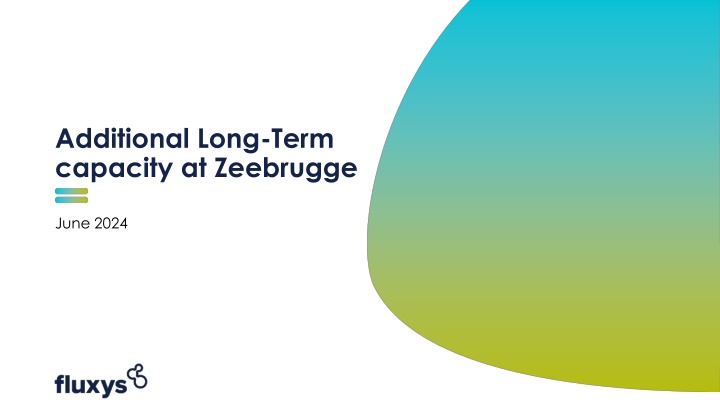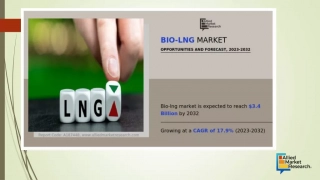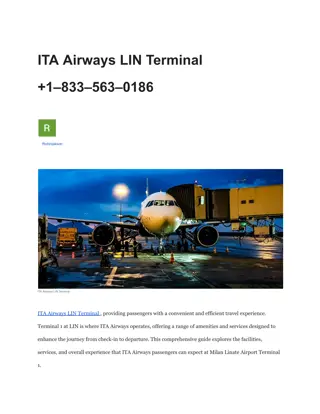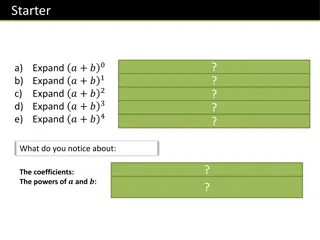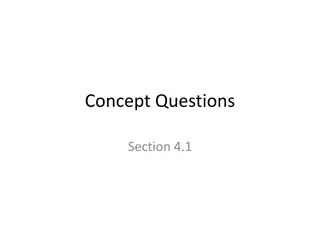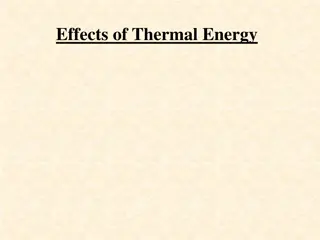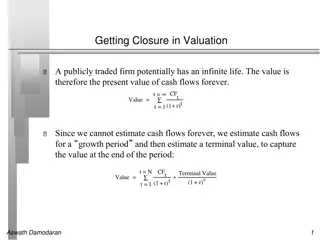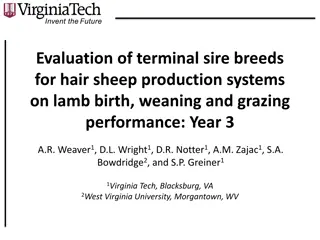Long-Term LNG Capacity Expansion at Zeebrugge Terminal
Continuous efforts are being made to enhance the long-term LNG capacity at Zeebrugge Terminal to meet the energy demands of Belgium and North-West Europe. Market interest is high, with potential additional slots being offered from April 2027. The allocation process involves a combination of subscription windows and auctions, ensuring fair distribution of capacity. Stakeholders can participate in the offering and submit their Best And Final Offer (BAFO) by the specified deadline. This strategic initiative aims to secure a reliable energy supply and maintain operational excellence at the terminal.
Download Presentation

Please find below an Image/Link to download the presentation.
The content on the website is provided AS IS for your information and personal use only. It may not be sold, licensed, or shared on other websites without obtaining consent from the author.If you encounter any issues during the download, it is possible that the publisher has removed the file from their server.
You are allowed to download the files provided on this website for personal or commercial use, subject to the condition that they are used lawfully. All files are the property of their respective owners.
The content on the website is provided AS IS for your information and personal use only. It may not be sold, licensed, or shared on other websites without obtaining consent from the author.
E N D
Presentation Transcript
Additional Long-Term capacity at Zeebrugge June 2024
Need for additional Long-Term LNG capacity at Zeebrugge Continuous challenge of securing the energy supply for Belgium & North-West Europe on the Long-Term Recent Call for Market Interest: Highparticipation Strong interest for capacities on Short- & Mid-term for a Long-Term duration Zeebrugge considered as a perfect gateway to bring gas to N-W Europe: Centrally located & well connected Reliable & operational excellence Successful creation, offering, sale and performance of additional short-term capacity over the last years on top of the historical Long- Term capacity Strongly encouraged by market players and stakeholders Operational excellence of the Terminal maintained without altering the services Very competitive tariffs 2
Increase of long-term capacities as of April 2027 Potential (yearly) additional ST slots Additional ST slots sold Offer of 2 lots of 12 slots per year as from April 2027 140 120 100 (pro-rata in 2027 : 2 lots of 9 slots) 80 110 LT slots (booked) 60 40 20 0 Deadline for submission 1 July 14.00 Deadline for BAFO 3 July 14.00 CREG decision 7 June 23 April 02 April 24 Assessment by CREG Subscription window Market Consultation 10 June Official 2 July 14.00 Feedback if BAFO is needed 5 July 14.00 Publication of the results communication
Offering the Additional Long-Term Capacity The offering The allocation What? - 2027: 2 lots of 9 slots 1. Longest duration - 2028 2044 (included): 2 lots of 12 slots per year 2. Pro rata For each lot, the number of slots/year is fixed Pro-rata quantity = requested capacity x (offered capacity / total requested capacity) How? - Combination subscription window and one step auction Pro-rata quantity is rounded to nearest integer (0,5 being rounded to 1) Duration (in years) Number of lots : 1 or 2 (+ optional : minimum request) 3. Earliest start date Start year Optional Premium (if allocation cannot be achieved) per Slot on top of regulated tariff 4. Premiumas a differentiator (if allocation cannot be achieved) For whom? 5. Best And Final Offer (BAFO) in case of same (second) highest bids - All LSA shippers can participate - Only one affiliate may participate When ? 10th June Monday 1st July 2024 4
Examples of allocation shaping together a bright energy future
Example 1 : 'duration as the first differentiator and impact of the minimum request Shipper A Shipper B 1 lot As from 2027 12 years 20 prem/slot 2 lots (min. 2) As from 2027 10 years 1 prem/slot In the first step we only consider the requested duration, without looking at the requested volume. In this example, shipper A is allocated 1 lot; the remaining lot will be offered in an auction maximum 10 weeks after the subscription window. 1 lot at regulated tariff. Not the longest duration and minimum request of 2 cannot be fulfilled Step 1: longest duration Longest duration Impact of the minimum request : value '2' should only be chosen as minimum request on the request form in case a shipper absolutely requires 2 lots. Otherwise, better to choose value '0' (default) or '1' (both have the same effect) Step 2: pro rata Step 3: Start date Step 4: Premium 6
Example 2 : impact of the pro-rata step on the maximum allocation Shipper A Shipper B 1 lot As from 2027 10 years 20 prem/slot 2 lots (min. 1) As from 2027 10 years 1 prem/slot For bids with the same longest duration, we consider the requested volume in step 2 and apply the pro-rata formula : Step 1: longest duration Same longest duration Same longest duration Requested Capacity x (Offered Capacity / Total Requested Capacity) 1 lot at regulated tariff. 1 x (2/3) = 0,66 rounded to 1 1 lot at regulated tariff. 2 x (2/3) = 1,33 rounded to 1 as soon as the pro-rata step is applied, a shipper can only be allocated max. 1 lot." Step 2: pro rata Step 3: Start date Step 4: Premium 7
Example 3 : bidding for 1 lot might be unfavourable Shipper A Shipper B Shipper C Shipper D Shipper E 1 lot As from 2027 18 years 20 prem/slot 1 lot As from 2027 18 years 1 prem/slot 1 lot As from 2027 18 years 0,8 prem/slot 2 lots (min. 1) As from 2027 18 years 0,6 prem/slot 2 lots (min. 1) As from 2027 18 years 0,8 prem/slot Note : value '2' should only be chosen as minimum request on the request form in case a shipper absolutely requires 2 lots. Otherwise, better to choose value '0' (default) or '1' (both have the same effect) Step 1: longest duration Same longest duration Same longest duration Same longest duration Same longest duration Same longest duration 1 lot at regulated tariff due to 2 x (2/7) = 0,57 rounded to 1 1 lot at regulated tariff due to 2 x (2/7) = 0,57 rounded to 1 Step 2: pro rata 1 x (2/7) = 0,29 rounded to 0 1 x (2/7) = 0,29 rounded to 0 1 x (2/7) = 0,29 rounded to 0 Step 3: Start date As soon as the pro-rata (step 2) is applied and in certain conditions (depending on the number of shippers and requested capacity), shippers bidding for 2 lots (with a minimum request of 0 or 1) might have a higher probability of success. Step 4: Premium 8
Example 4 : 0,5 is rounded to 1 in the pro-rata step Shipper A Shipper B Shipper C 1 lot As from 2027 10 years 20 prem/slot 1 lot As from 2028 10 years 1 prem/slot 2 lots (min. 1) As from 2030 10 years 0,8 prem/slot The result of the pro-rata is rounded to 0 or 1, in which 0,5 is rounded to 1. Step 1: longest duration Same longest duration Same longest duration Same longest duration If the pro-rata step doesn t allow the final allocation, the earliest start date will be considered in step 3. Step 2: pro rata 1 x (2/4) = 0,5 rounded to 1 1 x (2/4) = 0,5 rounded to 1 2 x (2/4) = 1 rounded to 1 1 lot at regulated tariff due to earliest start date 1 lot at regulated tariff due to second earliest start date Step 3: Start date Later start date Step 4: Premium 9
Example 5 : the allocation could happen in two different steps (1) Shipper A Shipper B Shipper C 1 lot As from 2029 15 years 20 prem/slot 2 lots (min. 1) As from 2027 10 years 1 prem/slot 1 lot As from 2027 10 years 0,8 prem/slot "A first lot could be allocated based on the "longest duration and the second one based on the "pro-rata . Step 1: longest duration 1 lot at regulated tariff due to longest duration Same second longest duration Same second longest duration Tariffs are here the same for both lots. 1 lot at regulated tariff due to 2 x (1/3) = 0,66 rounded to 1 Step 2: pro rata 1 x (1/3) = 0,33 rounded to 0 Step 3: Start date If one lot is already allocated based on the duration, the pro-rata formula will be : Requested Capacity x (Remaining Offered Capacity = 1 / Total Remaining Requested Capacity) Step 4: Premium 10
Example 6 : the allocation could happen in two different steps (2) Shipper A Shipper B Shipper C Shipper D 1 lot As from 2027 10 years 20 prem/slot 1 lot As from 2028 10 years 1 prem/slot 1 lot As from 2029 10 years 0,8 prem/slot 2 lots (min. 1) As from 2030 10 years 0,8 prem/slot "A first lot could be allocated based on the "pro-rata" and the second one based on the "start date . Step 1: longest duration Same longest duration Same longest duration Same longest duration Same longest duration Tariffs are here the same for both lots. 1 lot at regulated tariff due to 2 x (2/5) = 0,8 rounded to 1 Step 2: pro rata 1 x (2/5) = 0,4 rounded to 0 1 x (2/5) = 0,4 rounded to 0 1 x (2/5) = 0,4 rounded to 0 1 lot at regulated tariff due to earliest start date Step 3: Start date Later start date Later start date Step 4: Premium 11
Example 7 : two different prices might be possible (1) Shipper A Shipper B Shipper C Shipper D 1 lot As from 2029 15 years 20 prem/slot 1 lot As from 2027 10 years 1 prem/slot 1 lot As from 2027 10 years 0,8 prem/slot 1 lot As from 2027 10 years 0,8 prem/slot If the premium is needed for the second allocation (a first lot having been allocated through the steps 1-3 in this case based on the "duration"), there will be a difference in price. Step 1: longest duration 1 lot at regulated tariff due to longest duration Same second longest duration Same second longest duration Same second longest duration The lot allocated to shipper A in step 1 will be invoiced at regulated tariff, while shipper B will have to pay his premium (on top of the regulated tariff). Step 2: pro rata 1 x (1/3) = 0,33 rounded to 0 1 x (1/3) = 0,33 rounded to 0 1 x (1/3) = 0,33 rounded to 0 Step 3: Start date No differentiation No differentiation No differentiation 1 lot at 1 premium/slot due to highest bid Step 4: Premium Lower premium Lower premium 12
Example 8 : two different prices might be possible (2) Shipper A Shipper B Shipper C Shipper D 1 lot As from 2027 10 years 20 prem/slot 1 lot As from 2027 10 years 1 prem/slot 1 lot As from 2027 10 years 0,8 prem/slot 2 lots (min. 1) As from 2027 10 years 0,8 prem/slot If the premium is needed for the second allocation (a first lot having been allocated through the steps 1-3 in this case based on the "pro-rata"), there will be a difference in price. Step 1: longest duration Same longest duration Same longest duration Same longest duration Same longest duration 1 lot at regulated tariff due to 2 x (2/5) = 0,8 rounded to 1 The lot allocated to shipper D in step 2 will be invoiced at regulated tariff, while shipper A will have to pay his premium (on top of the regulated tariff). Step 2: pro rata 1 x (2/5) = 0,4 rounded to 0 1 x (2/5) = 0,4 rounded to 0 1 x (2/5) = 0,4 rounded to 0 Step 3: Start date Same earliest start date Same earliest start date Same earliest start date 1 lot at 20 premium/slot due to highest bid Step 4: Premium Lower premium Lower premium 13
Example 9 : when both lots are allocated at the premium step, both shippers will pay the second highest premium Shipper A Shipper B Shipper C 1 lot As from 2027 10 years 20 prem/slot 1 lot As from 2027 10 years 1 prem/slot 1 lot As from 2027 10 years 0,8 prem/slot If no allocation can occur prior the premium step, the lots will be allocated to the shippers with the highest and second highest premium. Step 1: longest duration Same longest duration Same longest duration Same longest duration The second highest premium will be applicable (paid) for both shippers for the whole contract period. Step 2: pro rata 1 x (2/3) = 0,6 rounded to 1 1 x (2/3) = 0,6 rounded to 1 1 x (2/3) = 0,6 rounded to 1 Step 3: Start date Same earliest start date Same earliest start date Same earliest start date 1 lot at 1 premium/slot due to second highest bid 1 lot at 1 premium/slot due to highest bid Step 4: Premium Lower premium 14
Example 10 : bidding for 1 lot might be unfavourable Shipper A Shipper B Shipper C Shipper D Shipper E 1 lot As from 2027 18 years 20 prem/slot 1 lot As from 2027 18 years 240 prem/slot 2 lots (min. 1) As from 2027 18 years 1 prem/slot 2 lots (min. 1) As from 2027 18 years 0,8 prem/slot 2 lots (min. 1) As from 2027 18 years 0,6 prem/slot If no allocation can occur based on the pro-rata step, only the shippers with the highest pro-rata quantity (after rounding) will proceed to the next steps (start date and then premium)". Step 1: longest duration Same longest duration Same longest duration Same longest duration Same longest duration Same longest duration Step 2: pro rata 1 x (2/8) = 0,25 rounded to 0 1 x (2/8) = 0,25 rounded to 0 2 x (2/8) = 0,5 rounded to 1 2 x (2/8) = 0,5 rounded to 1 2 x (2/8) = 0,5 rounded to 1 Step 3: Start date No differentiation No differentiation No differentiation 1 lot at 0,8 premium per slot 1 lot at 0,8 premium per slot Step 4: Premium Lower premium 15
Example 11 : bidding for 1 lot is not unfavourable in case of many participants and premium might be key (if same start date) Shipper A Shipper B Shipper C Shipper D Shipper E Shipper F If the result of the pro- rata is 0 (after rounding) for all shippers, all shippers will proceed to the next steps. 1 lot As from 2027 18 years 20 prem/slot 1 lot As from 2027 18 years 0,5 prem/slot 1 lot As from 2027 18 years 0,8 prem/slot 2 lots (min. 1) As from 2027 18 years 0,6 prem/slot 2 lots (min. 1) As from 2027 18 years 0,8 prem/slot 2 lots (min. 1) As from 2027 18 years 1 prem/slot Step 1: longest duration Longest duration Longest duration Longest duration Longest duration Longest duration Longest duration The rounding applies and there is no distinction based on the result before rounding. Step 2: pro rata 1 x (2/9) = 0,22 is rounded to 0 1 x (2/9) = 0,22 is rounded to 0 1 x (2/9) = 0,22 is rounded to 0 2 x (2/9) = 0,44 is rounded to 0 2 x (2/9) = 0,44 is rounded to 0 2 x (2/9) = 0,44 is rounded to 0 Step 3: Start date No differentiation No differentiation No differentiation No differentiation No differentiation No differentiation Step 4: Premium 1 lot at 1 premium per slot 1 lot at 1 premium per slot Lower premium Lower premium Lower premium Lower premium 16
Example 12 : a BAFO might be needed in case of same premiums Shipper A Shipper B Shipper C Shipper D Shipper E Note : to avoid a BAFO, we encourage shippers to provide a premium with decimals 1 lot As from 2027 18 years 20 prem/slot 2 lots (min. 1) As from 2027 18 years 20 prem/slot 2 lots (min. 1) As from 2027 18 years 20 prem/slot 2 lots (min. 1) As from 2027 18 years 0,8 prem/slot 2 lots (min. 1) As from 2027 18 years 0,6 prem/slot Step 1: longest duration Same longest duration Same longest duration Same longest duration Same longest duration Same longest duration Step 2: pro rata 1 x (2/9) = 0,22 rounded to 0 2 x (2/9) = 0,44 rounded to 0 2 x (2/9) = 0,44 rounded to 0 2 x (2/9) = 0,44 rounded to 0 2 x (2/9) = 0,44 rounded to 0 Step 3: Start date Best And Final Offers (BAFO) by the shippers competing: A: 20 / slot B: 24 /slot C: 25 /slot No differentiation No differentiation No differentiation No differentiation No differentiation Highest premium, BAFO needed for differentiation Highest premium, BAFO needed for differentiation Highest premium, BAFO needed for differentiation Step 4: Premium Lower premium Lower premium Step 5: Best And Final Offer 1 lot at 24 premium/slot due to second highest BAFO 1 lot at 24 premium/slot due to highest BAFO Lower BAFO 17
Example 13 : BAFO (for the 2nd allocation) < highest premium Shipper A Shipper B Shipper C Shipper D Shipper E 1 lot As from 2027 18 years 22 prem/slot 2 lots (min. 1) As from 2027 18 years 16 prem/slot 2 lots (min. 1) As from 2027 18 years 16 prem/slot 2 lots (min. 1) As from 2027 18 years 0,8 prem/slot 2 lots (min. 1) As from 2027 18 years 0,6 prem/slot Step 1: longest duration Same longest duration Same longest duration Same longest duration Same longest duration Same longest duration Best And Final Offers by the shippers competing: B: 18 /slot C: 17 /slot Step 2: pro rata 1 x (2/9) = 0,22 rounded to 0 2 x (2/9) = 0,44 rounded to 0 2 x (2/9) = 0,44 rounded to 0 2 x (2/9) = 0,44 rounded to 0 2 x (2/9) = 0,44 rounded to 0 Step 3: Start date No differentiation No differentiation No differentiation No differentiation No differentiation 1 lot at 18 premium / slot due to highest premium Highest premium, BAFO needed for differentiation Highest premium, BAFO needed for differentiation Step 4: Premium If BAFO < highest premium BAFO (on top of regulated tariff) will be paid by both shippers Lower premium Lower premium Step 5: Best And Final Offer 1 lot at 18 premium/slot due to highest BAFO Lowest BAFO 18
Example 14 : BAFO (for the 2nd allocation) > highest premium Shipper A Shipper B Shipper C Shipper D Shipper E 1 lot As from 2027 18 years 22 prem/slot 2 lots (min. 1) As from 2027 18 years 16 prem/slot 2 lots (min. 1) As from 2027 18 years 16 prem/slot 2 lots (min. 1) As from 2027 18 years 0,8 prem/slot 2 lots (min. 1) As from 2027 18 years 0,6 prem/slot Best And Final Offers by the shippers competing: B: 25 /slot C: 24 /slot Step 1: longest duration Same longest duration Same longest duration Same longest duration Same longest duration Same longest duration Step 2: pro rata 1 x (2/9) = 0,22 rounded to 0 2 x (2/9) = 0,44 rounded to 0 2 x (2/9) = 0,44 rounded to 0 2 x (2/9) = 0,44 rounded to 0 2 x (2/9) = 0,44 rounded to 0 Step 3: Start date No differentiation No differentiation No differentiation No differentiation No differentiation If BAFO > highest premium premium (on top of regulated tariff)will be paid by both shippers 1 lot at 22 premium / slot due to highest premium Highest premium, BAFO needed for differentiation Highest premium, BAFO needed for differentiation Step 4: Premium Lower premium Lower premium Step 5: Best And Final Offer 1 lot at 22 premium/slot due to highest BAFO Lowest BAFO 19
Q&A shaping together a bright energy future
General Are the tariffs fixed ? Tariffs for LNG services are approved by CREG until 2039. Between 2040 and 2044 a new tariff will be applicable. In case the regulated tariff increases, the shipper holding capacity may request Terminal Operator to reduce the number of its allocated Slots to offset the increase in Regulated Tariff. Tariffs for Transmission are fixed until 2027 included, after that a new tariff period of 4 years will be applicable. What is the premium? And when will I have to pay it ? The premium is relative to a slot ( /slot) and will be invoiced on a monthly basis together with the slots. If applied, this premium will be flat throughout the full duration. Is the premium indexed too ? No, the premium won't be indexed. However, the regulated tariffs for LNG services are indexed, as following:
General Which capacity should I book to enter the ZTP area from the LNG terminal ? Where and when should I book it ? Select IP Zeebrugge LNG Terminal on the PRISMA platform: The allocation principle is FCFS and can be booked day ahead.
Allocation principles What if I don t fill out the minimum request ? The default value is 0, which is in practice equal to 1 in the allocation process. What impact does the minimum request have on the pro-rata ? As soon as bids are entering the pro-rata step, shippers with a minimum request of 2 lots will be out. A minimum request of 2 (value 2 on the request form) should only be chosen in case a shipper absolutely requires 2 lots, otherwise better to choose value 0 (default) or 1 (both have the same effect). As soon as the pro rata is required in the allocation process, a shipper can only be allocated max 1 lot. What happens if all rounding in the pro-rata equals zero ? All the shippers who entered the pro-rata step will then proceed to the next step(s). See allocation examples 7 and 11. What happens if the pro-rata gives, after rounding, 0 to some shippers and 1 to others ? Only the shippers with the highest pro-rata quantity (1, after rounding) will proceed to the next step(s). See allocation example 10.
Allocation principles How does the premium step work ? If no allocation can occur prior the premium step, the lots will be allocated to the shippers with the highest and second highest premium. The second highest premium will be applicable (paid) for both shippers for the whole contract period. See allocation example 9. Is the premium applied even if the allocation occurs before the 4th step ? No, every allocation prior the 4th step will be done at regulated tariff. This implies that it could happen that 1 lot is allocated without premium and 1 lot with premium (the allocation can therefore result in lots with two different prices). See allocation examples 7 and 8. Can I still win 2 lots if the premium is applied ? No, as soon as the pro rata is required in the allocation process, a shipper can only be allocated max 1 lot. By consequence: Every allocation of 2 lots to 1 shipper is based upon a differentiation on the duration. The premium included in the bid is a premium (per Slot) applied for 1 lot, not 2.
Allocation principles What happens if multiple shippers share the same, highest bid ? A Best And Final Offer (BAFO) will be requested from the shippers having the same. Fluxys will approach the respective shippers before 2nd July 24 at 2pm CET and will request those shippers to provide a BAFO before 3rd July 24 at 2pm CET. The shipper(s) with the highest bid(s) will be allocated the lot(s). To avoid a BAFO, it is encouraged to include a premium with decimals. What happens if one shipper has the highest bid and multiple shippers have the same, second highest bid ? The first lot will be allocated to the shipper with the highest bid. A BAFO will be requested from the shippers having the same bid. The following premium will be applied in the allocation: Highest premium in step 4 > BAFO BAFO applied Highest premium in step 4 < BAFO Highest premium in step 4 applied What if the Best And Final Offer (BAFO) is still the same and no allocation can be done ? An auction will be organized within 10 weeks after the end of the subscription window.
